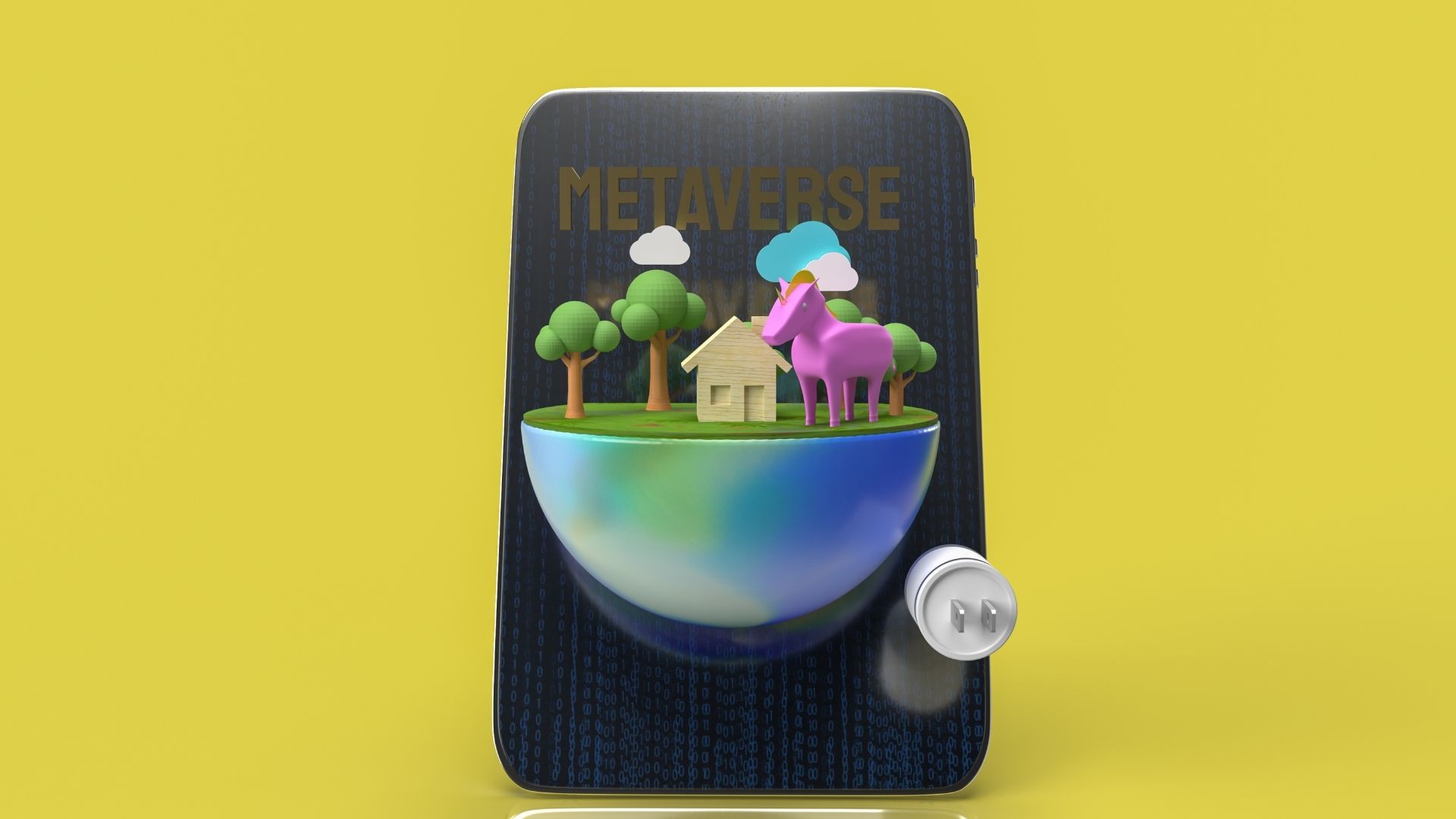2022: The Rise of Play To Earn Games and GameFi Apps

As DeFi and cryptocurrency continue to impact the digital world, several industries are working on ways to innovate and improve their creations with decentralized technology. The video game industry is one of the latest sectors to incorporate blockchain technology, especially with the emergence of the metaverse. The technology has changed the way players trade in-game assets, rewards, characters, and more, by integrating NFT technology, DeFi, and fundamental crypto concepts.
The latest play-to-earn concept, also known as GameFi, allows gamers to convert their in-game assets into money that can be used in the real world. The GameFi sector has grown significantly and is expected to have a massive impact on the global gaming market, which is expected to be worth $314 billion in 2027 according to a report by Mordor Intelligence.
This article answers the question, “What is GameFi?” and discusses the impact the play-to-earn model will have on the gaming industry. Let’s get started!
The recent growth of play-to-earn and GameFi sector
Play-to-earn (P2E) games have disrupted the traditional gaming industry by allowing gamers to earn NFTs by completing pre-determined objectives when playing games. A recent study by Financial Express found that more than 75 percent of gamers wish to exchange in-game assets for a currency that can be used across different platforms. The play-to-earn model has transformed the gaming industry by allowing players to trade and exchange their assets on different platforms.
Before the introduction of play to earn games, in-game assets didn’t have any real-world value. This is because the developers owned and controlled all the assets in the game. Players would pay top dollar for a game’s prime assets like weapons and skins, but could only use them in the game. They couldn’t transfer them elsewhere or trade them for other assets. When the developer changes the game’s format and the assets become obsolete, the players lose their investment and have to acquire new assets if they want to continue playing the game. This way, traditional games were only for entertainment and thrills. The incorporation of blockchain and cryptocurrency has given rise to NFTs, which in turn gave rise to GameFi. This has helped gamers add value to their assets and earn an income while playing their favorite games.
The ability to earn money while having fun has made play to earn crypto games very popular with players. This saw the rapid rise of GameFi revenue in the third quarter of 2021, mainly due to the gross incomes of top crypto games such as Axie Infinity, Binemon, and Solchicks. Axie Infinity is undoubtedly the biggest game in the crypto world, surpassing $1 billion in sales and attracting more than 1 million daily active users.
Figure 1: Axie Infinity. Source: Axie Infinity
This blockchain-powered GameFi app allows players to raise, breed, and trade digital pets called Axies. Players spend time upgrading the Axies and trade them on a dedicated marketplace to earn cryptocurrency, which they later convert to real-world money. The game has become so huge, especially in Asia, where players are making up to three times the wages they earn in their regular jobs. With this income, players are buying homes and other essential household items.
2022: The year of GameFi and the metaverse
2020 was the year of DeFi and 2021 proved to be a huge year for NFTs. No one envisioned that these two technologies would be a big hit just about a year ago, but there’s enough proof that GameFi will continue to grow in 2022 as it connects two key industries, gaming, and finance. GameFi offers a great opportunity for players to earn crypto through popular activities such as yield farming and breeding while enjoying an immersive gaming experience. All these combined with NFTs create sustainable gaming economies and incentivize player engagement.
NFTs are permanent, read-only records that prove ownership of digital assets. These tokens are not mutually interchangeable and their ownership is verified on the blockchain ledger. Because of their unique identity, NFTs have the ability to unlock value, democratize access, and increase transparency in industries such as art, music, gaming, and the metaverse.
NFT has been a useful addition to the gaming industry as it allows players to own assets, earn valuable tokens and trade them in the open market in a manner that was not possible before. GameFi apps require players to own an NFT which can be created in the metaverse, such as a playable character, a clothing item, or something else to play the game.
For example, Axie Infinity requires users to own virtual pets to be able to participate in the game. Players earn tokens when they complete certain objectives in the game that they can use to buy additional pets or monetize to get cryptocurrency. The game has become so popular that the cost of owning an Axie, the virtual pet, has skyrocketed.
With so much traction gained last year, we don’t expect GameFi’s growth to slow down this year. In fact, its growth will be accelerated due to Facebook’s plan to launch its own metaverse. In its simplest form, a metaverse is an immersive digital world for users to connect and interact, just like in real life. While Facebook’s virtual world is different from the decentralized metaverses of crypto projects, the tech giant’s announcement to venture into the virtual world has created a lot of hype around the topic and boosted the popularity of blockchain solutions in the gaming industry. As virtual worlds and play to earn crypto games become more popular, these two trends will greatly accelerate the growth of the GameFi sector.
For this reason, we should expect to see more players, investors, brands, and celebrities join the space as more innovative projects launch their own games in the blockchain. Blockchain projects will ride the wave around virtual worlds to attract more users through their game marketing strategies. They will also take time to fine-tune their creations and make it clear why a centralized economy isn’t the best way to create a metaverse.

What the future holds for the industry
With GameFi positioned to disrupt the gaming industry, we are looking at a more decentralized future where players can earn money while playing their favorite games. Most of these blockchain games are powered by the Ethereum blockchain that has been operating on the proof-of-work mechanism. However, there are plans to move to the proof-of-stake (POS) mechanism that uses 99 percent less energy than its current state.
POS is a mechanism used by blockchains to achieve distributed consensus. With this new mechanism, users are required to stake 32 ETH to become a validator in the Ethereum network. Validators are selected randomly to create blocks and need to check and confirm the blocks they don’t create. The proof of stake mechanism comes with several upgrades on the proof of work system in the following manner;
- Improved energy efficiency – users don’t need a lot of energy to mine blocks.
- Low barriers of entry – you don’t need complex hardware to create new blocks.
- Improved immunity to centralization – the system will lead to the creation of more nodes in the network.
The other thing that will dominate the sector in the coming years is cross-chain technology. This is where multiple blockchains can communicate with each other to facilitate information exchange. For instance, a user in one blockchain can send data to a user in another blockchain, and the receiver will read and understand the content.
However, current systems don’t support the exchange of information between blockchains. Cross-chain technology aims to solve these problems by increasing the interoperability of blockchains. Upcoming GameFi games will embrace this concept as they aim to create platforms capable of communicating with others without using third parties.
Another trend that will become more evident in the coming days is the adoption of the play to earn model by well-known companies. Large traditional gaming studios like EA and Ubisoft are already getting in on the action and we should expect to see a proliferation of new games targeting existing players.
Lastly, there will be a change in the perception of ‘value’ in the GameFi space. While an NFT could be valuable to one user, it may not be valuable to the next person. Players assign different values to the NFTs in a game, and this affects how much they are willing to pay for it.

Crypto game marketing mastery
Finding it hard to get your crypto game the visibility it deserves? Get on top of it today with The Top Crypto Game Marketing Guide.
The rise of GameFi and play to earn games has been tremendous over the past year, but that’s nothing compared to what’s to come. P2E gaming and its decentralized economy will dominate the metaverse and impact the physical world. Players will have a bigger role to play in the wider gaming ecosystem filled with opportunities.
Game Marketing Genie is here to help you market your crypto game to the right audience. We are a leading game marketing agency and can take your crypto game to the next level with custom growth and marketing strategies.
Get in touch to talk to one of our experts today!



